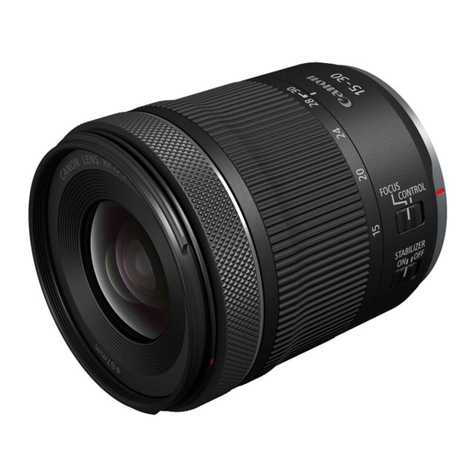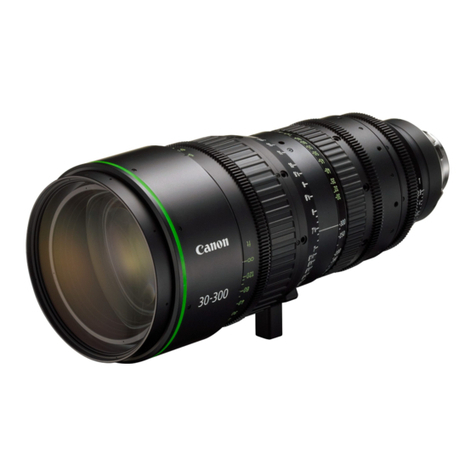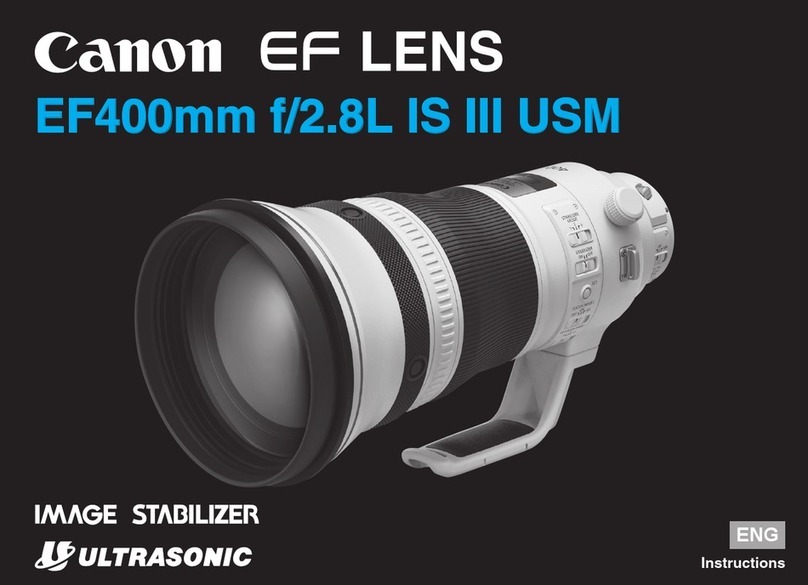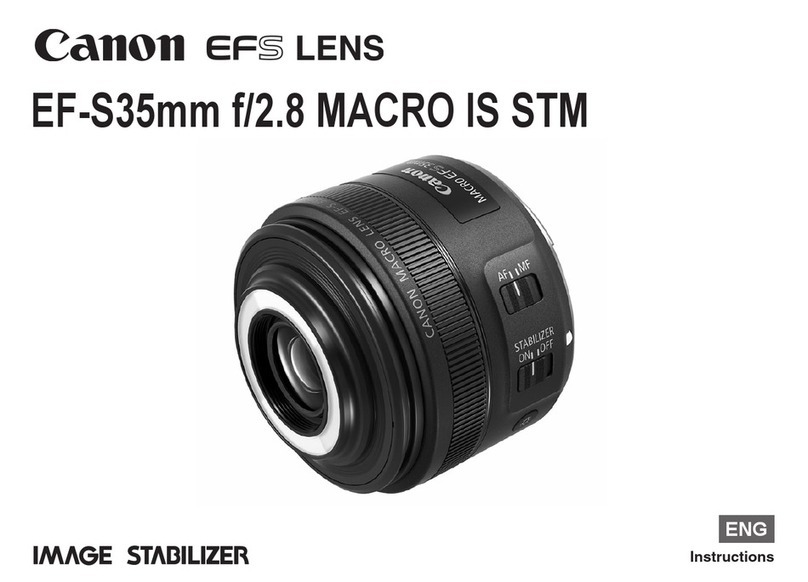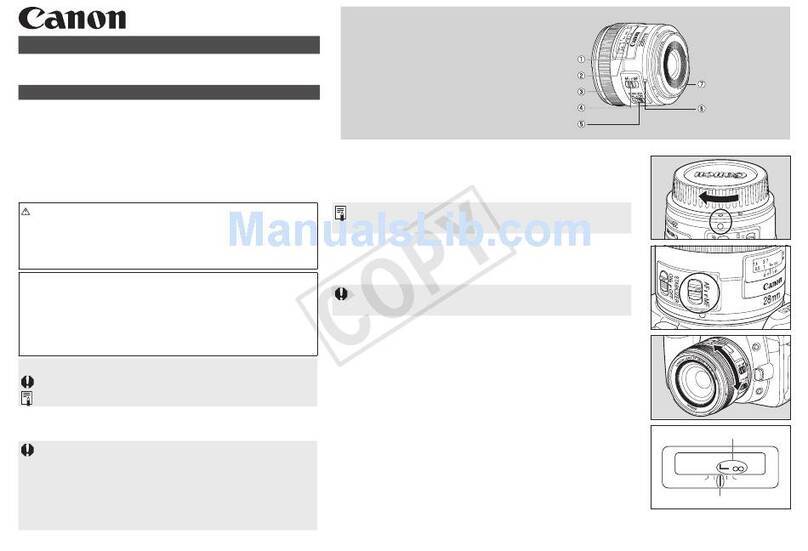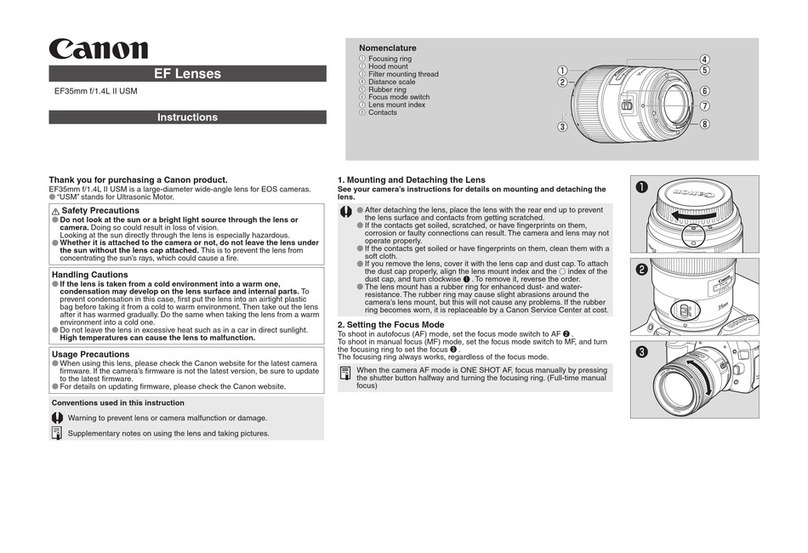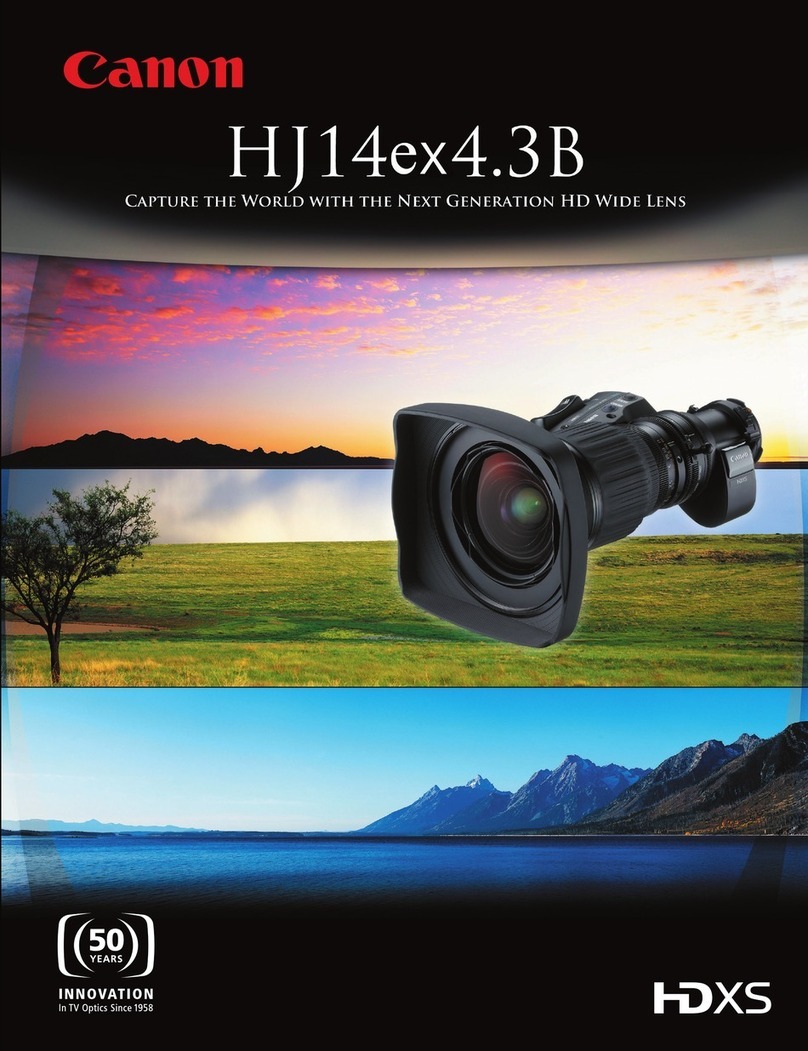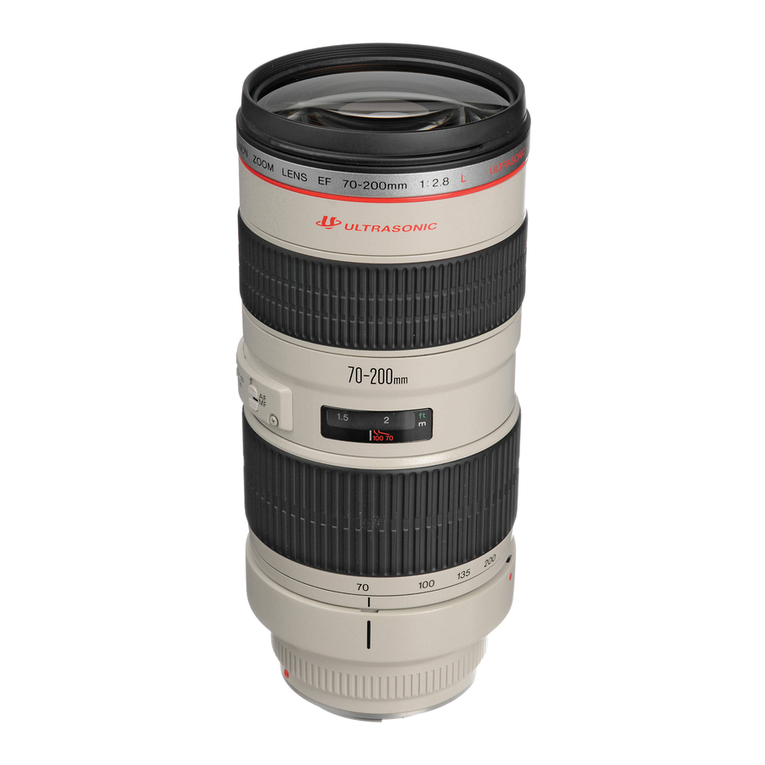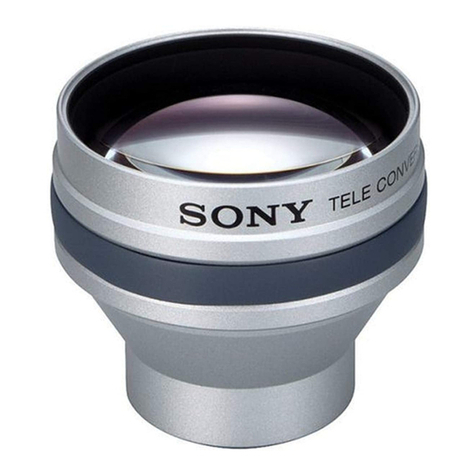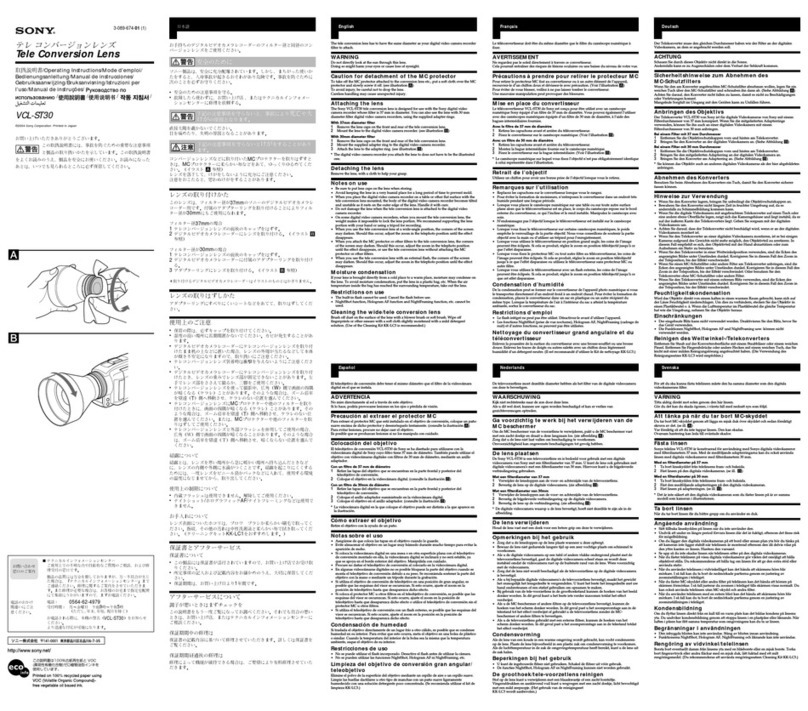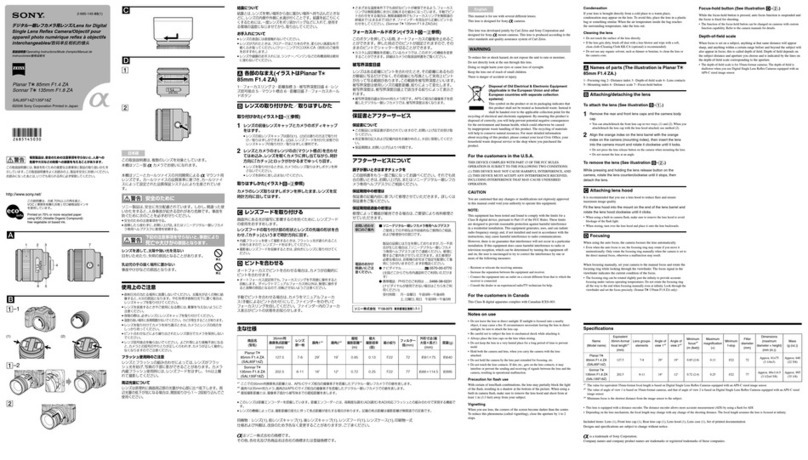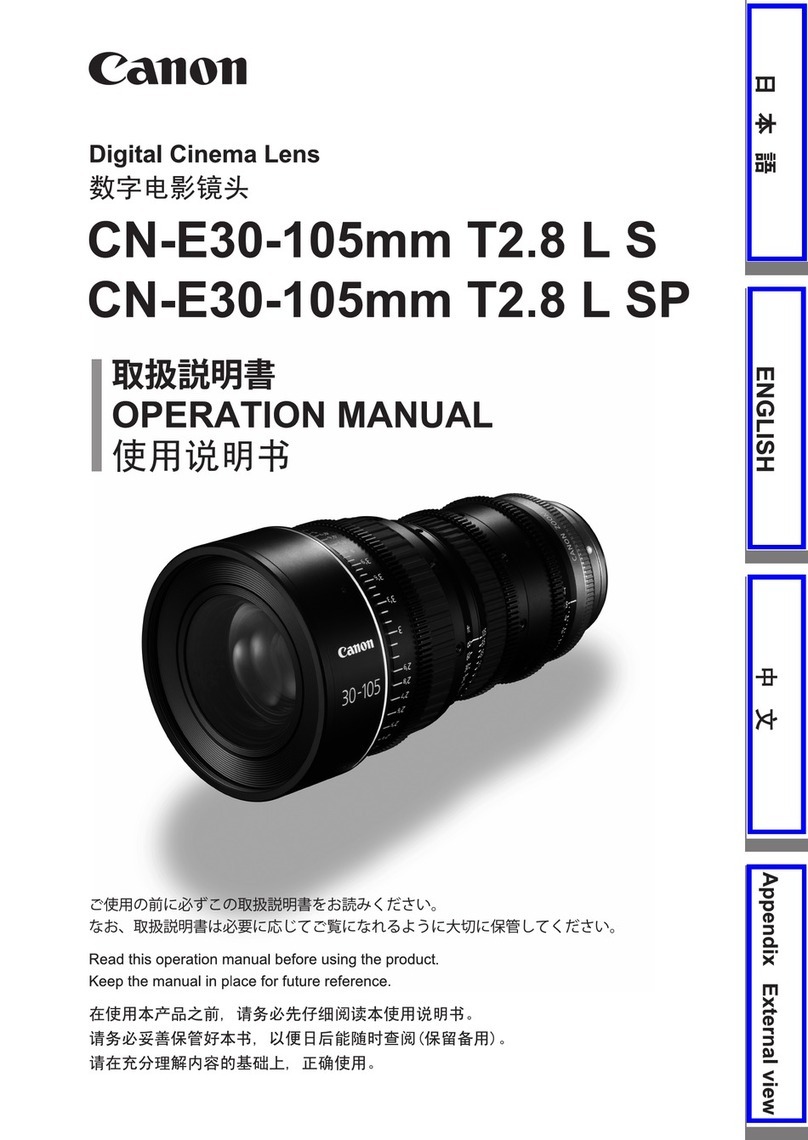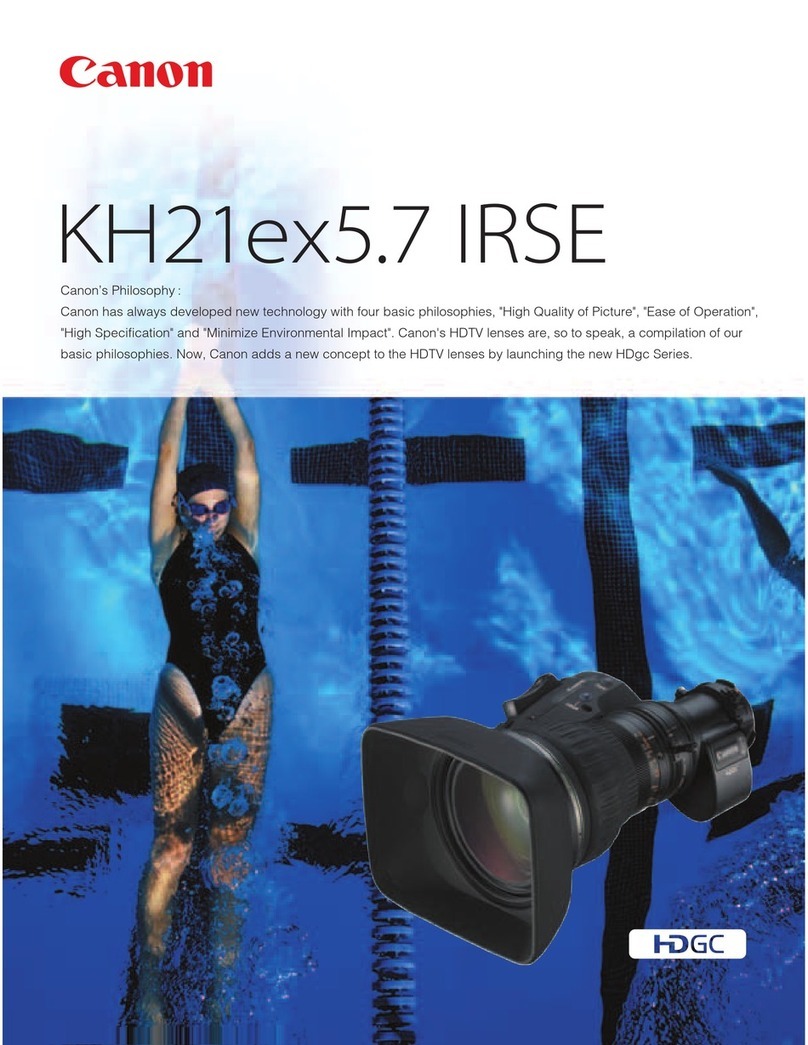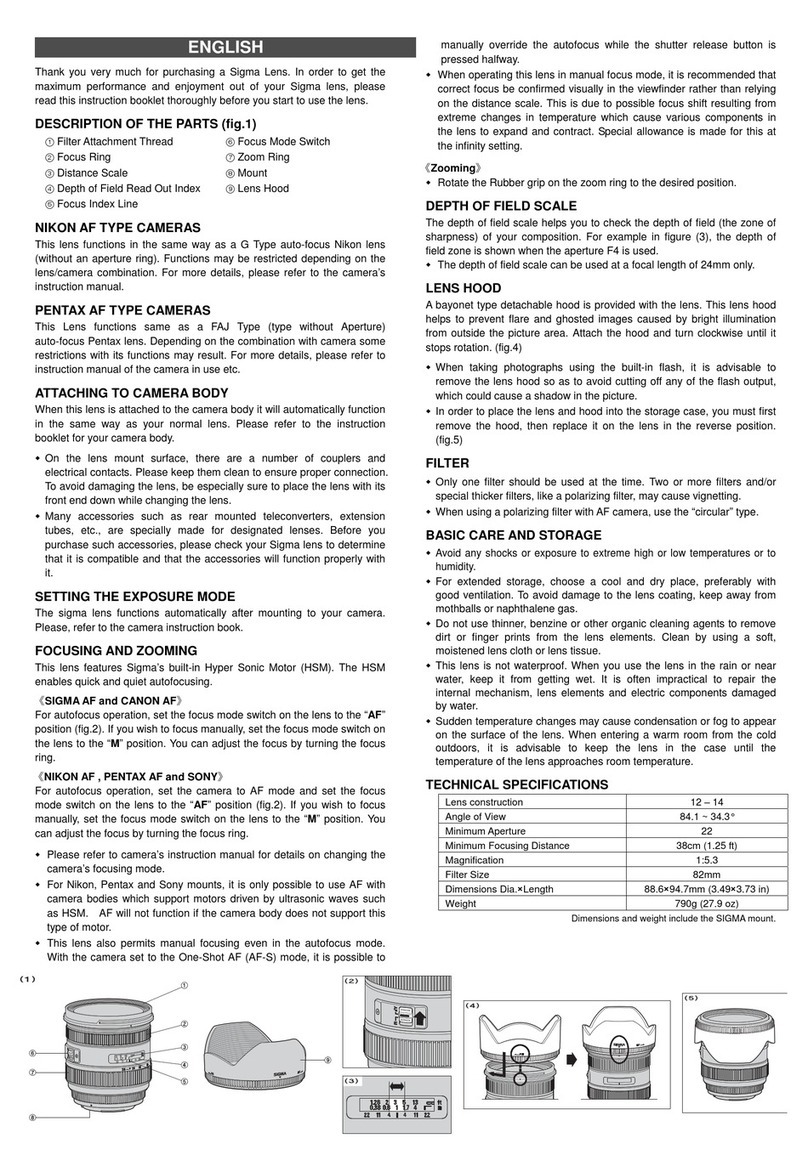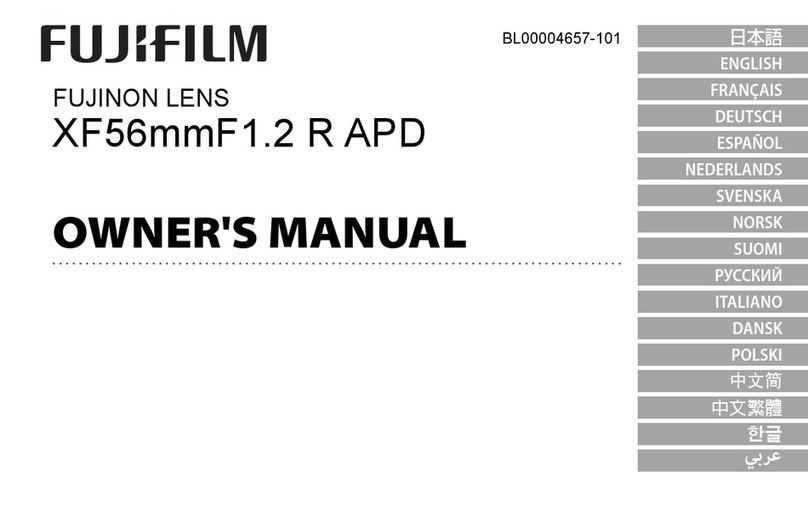
●❶
●❷
●❸
●❹
●❺
Thank you for purchasing a Canon product.
The EF135mm f/2.8 is a lens that incorporates a soft focusing
mechanism.
Safety Precautions
1. Do not look at the sun or a bright light source through the
lens or camera. Doing so could result in loss of vision. Looking
at the sun directly through the lens is especially hazardous.
2. Whether it is attached to the camera or not, do not leave the
lens under the sun without the lens cap attached. This is to
prevent the lens from concentrating the sun’s rays, which could
cause a fire.
Handling Cautions
If the lens is taken from a cold environment into a warm one,
condensation may develop on the lens surface and internal
parts. To prevent condensation in this case, first put the lens
into an airtight plastic bag before taking it from a cold to
warm environment. Then take out the lens after it has warmed
gradually. Do the same when taking the lens from a warm
environment into a cold one.
1. Mounting and Detaching the Lens
See your camera’s instructions for details on mounting and
detaching the lens.
• After detaching the lens, place the lens with the rear end up to
prevent the lens surface and contacts from getting scratched.
• If the contacts get soiled, scratched, or have fingerprints on them,
corrosion or faulty connections can result. The camera and lens
may not operate properly.
• If the contacts get soiled or have fingerprints on them, clean them
with a soft cloth.
• If you remove the lens, cover it with the dust cap. To attach it
properly, align the lens mount index and the index of the dust
cap, and turn clockwise. To remove it, reverse the order.
2. Setting the Focus Mode
To shoot in autofocus (AF) mode, set the focus mode switch to AF ❸.
To shoot in manual focus (MF) mode, set the focus mode switch to
MF, and focus by turning the focusing ring.
• Due to the difficulty of adjusting the focus in MF for soft focus
shots, we recommend that you use AF.
3. Setting the Soft Focus Index
You can select a soft focus index of 0, 1 or 2. Higher settings give a
more pronounced soft-focus effect. Selecting the 0 setting disables
the soft focus effect.
While sliding the soft focus switch in the direction of the arrow,
select the image softness by turning the soft focus ring ❹.
<Correlation between aperture and the soft focus intensity>
The recommended settings for normal portrait shots are an aperture
of f/2.8 (wide aperture) and a soft focus index of 2. In shots with
strong backlighting or highlights, you should reduce the soft focus
index to 1.
QThe soft focus effect can be checked as a guide with the
highlighted areas in the viewfinder image.
QSince image softness also depends on the aperture, the aperture-
priority AE mode is best for soft focus photography.
Q
For more information on the effects of combinations of soft focus
indexes and aperture settings, see the enclosed leaflet (Comparisons
Between the Soft Focus Index and Aperture)
.
4. Adjusting the Focus
Adjust the focus after you have set the soft focus index.
5. Depth-of-Field Scale
The depth of field is the distance in front of and behind the plane
of focus on the subject that appears sharp. The depth of field is
indicated by the area between the depth-of-field scale lines below
the distance scale. The numbers on the scale are F values, and for
example, if the shooting distance is 5 m and the aperture is f/22, the
area in focus will extend from about 4.5 m to 7 m ❺.
• The depth-of-field scale is an approximate indicator.
Nomenclature
●①Contacts
●②Lens mount index
●③Focus mode switch
●④Focusing ring
●⑤Soft focus switch
●⑥Soft focus ring
●⑦Soft focus index
●⑧Distance scale
●⑨Depth-of-Field scale
EF Lens
EF135mm f/2.8 (with soft focus mechanism)
Instruction
